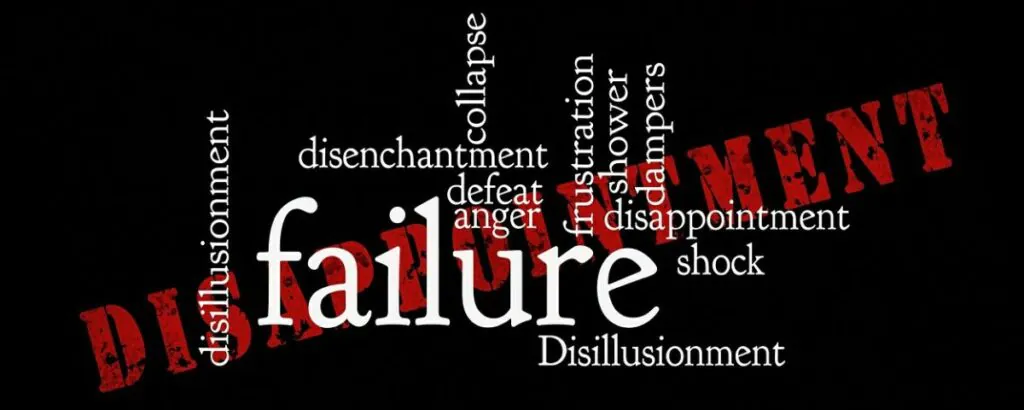B2B contacts and customer interviews
Innovation with clever questioning techniques. Let’s talk about details and use cases!

Innovation means developing something new and being successful with it in the target group. For companies, this usually means designing new products, services and business models. When companies open their doors and arms to cooperation with outsiders, this is known as open innovation. Whether and to what extent open innovation should be part of the innovation process is an important decision in the innovation strategy. Like all strategic decisions, open innovation has many aspects as well as strengths and weaknesses. The most important perspectives and experiences from numerous industrial projects are summarized here.
If you want to go quickly, go alone. If you want to go far, go together.
This saying could be the motto for open innovation. Although in some cases, open innovation does indeed lead to results faster than self-brooding. But not always.
Innovation development behind closed doors is called closed innovation. This is where companies bring in the best and most competent employees and develop innovations relatively independently from the outside. This can succeed if the company has a real knowledge advantage over the competition. Until a few decades ago, closed innovation was the standard approach to creating innovations. And in many companies, this is still the standard approach today. An approach that works for many companies. However, pure closed innovation processes are increasingly being replaced by open innovation.
Open innovation processes are very diverse. They can be opened up in a wide variety of directions. And companies rarely open up their innovation processes in all directions at the same time.
A homogeneous development team is a pretty weak setup for innovation.
Opening up innovation work to collaboration between several departments is a first step towards open innovation. What may sound ridiculous for industrial companies with a strong capacity for innovation may be a difficult hurdle to overcome for a medium-sized engineering company. The standards are therefore very different. And just as different is what open innovation means, how it works and what results can be expected.
Good ideas are on the street. You just have to collect them.
And if the company has a problem with employee engagement, then listening, collecting ideas and simply implementing them can actually be a solution. Often it is not. The ideas are often well suited for continuous improvement. Snack vending machine in the canteen. Conversion of the production line. Telephone boxes for the open-plan office. But the ideas are usually not mature enough for new products and services with good market prospects. As open innovation, the approach of broad employee participation can nevertheless have positive effects.
We finally have the image of the “glossy expert” and now we are supposed to tell the customer that we don’t know what they really need?
Taking customers behind the scenes is a major hurdle for many companies. Especially for those that are organizationally very mature and obviously professional. Especially in business-to-business (B2B). Because behind the scenes, all that glitters is no longer gold. This shows weakness and makes you vulnerable. A major threat to middle management. This should be taken seriously. In terms of innovation success, cooperation with direct and indirect customers or even users and users is an extremely valuable component of open innovation.
Innovation does not like to cook in its own juice.
When today’s salesperson talks to today’s customer, they learn exactly what they already know. New conversations are more promising. B2B customer interviews in particular are an often underestimated tool for far-reaching innovation approaches. With existing customers. Or with customers you have not been able to win. But especially with customers who have not yet been approached. Potential customers, in other words. They are another building block for open innovation. It is important not to open the sales door directly. If the first conversation is already on a forward-looking footing, then the sale will come all by itself.
Innovation with clever questioning techniques. Let’s talk about details and use cases!
Yesterday’s extended workbench can be tomorrow’s partner.
Whether upstream, downstream or at the same level in the value chain. In every industry, many people are in the same boat. And not all of them are rowing for each other’s success. But opportunities for cooperation are seen much less often than potential competition. There are psychological reasons for this. Yet there are many similarities. Many stages of the value chain work for the same end user. Many companies have the same customer. And many companies could join forces to solve problems that no one has yet seriously considered. The growing networking between companies that are open to innovation is one of the strongest trends in the field of open innovation.
You don’t always have to reinvent the wheel (yourself). Others are already doing that.
Research institutes and universities in particular are inventing wheels that industrial companies would have no time for at all. Unfortunately, the results are not always beautifully packaged. The commercial usability is unclear, the slides look terrible and communication is anything but easy. The good thing is: Not many take a serious look at these diamonds in the rough. It took almost 10 years after the development of the mp3 format for the first mobile mp3 player to be launched.

You still have to have chaos inside you to give birth to a dancing star [Nietzsche].
Startups are nothing else. Chaos. Chaos & diamonds in the rough. This makes collaboration difficult. And yet industrial companies and start-ups can learn a lot from each other. And they can also benefit. Because in addition to the free side effects of shedding a few layers of dust, industry can implement good ideas and bring them to the streets that might have failed miserably in a startup.
If I can’t beat you, then I’ll just buy you!
Of course, buying a start-up is not usually a hostile takeover. It is certainly an opening for ideas from outside in the sense of open innovation. With all the opportunities and risks that external ideas entail. Maybe they don’t fit. Perhaps they are not accepted. Or maybe they fit, are accepted, but still fail.
Examples:
1000 eyes see more than 2.
There are so many people. Don’t they have ideas that you can use? Sometimes they do. In recent years, an entire industry of idea developers has emerged. Full-time creatives who develop ideas around the clock. You can find these full-time creatives on crowdsourcing platforms. If you know what you are looking for, you can use crowdsourcing to find solutions. For example, in the form of typical user problems, highly technical solution ideas or inspiration for rusty developers.
Coopetition [kəʊˌɒpəˈtɪʃ(ə)n]: Willingness to cooperate with the competition for a better end result.
If BMW and Mercedes can manage to make common cause, then you can too. In fact, BMW and Mercedes are cooperating in the ShareNow car sharing business model. Incidentally, this also works in B2B. Steel trader Klöckner, for example, has joined forces with its direct competitors to set up a steel trading platform. A bold step. Perhaps not the first thing many people think of when they think of open innovation. And perhaps also something for advanced innovators.

I would do everything again the way I did it. With one exception: I would look for better advisors sooner.” [Aristoteles Onassis]
Innovation consulting sometimes covers several approaches to open innovation. In addition to additional technical expertise, the consulting team usually contributes a network of experts, experience in the innovation process and the necessary moderation.
All that glitters is not gold.
The devil is in the detail and every opportunity always involves a risk. But open innovation also has numerous advantages. Used skillfully for the right purposes, it can be a great added value for an individual company or an entire industry. And the added value is not limited to new ideas. Often, the new ideas are not the exciting thing about open innovation. The innovation system usually benefits in a completely different way.
If you ask a lot of questions, you will get a lot of answers.
And if you ask for ideas, you will get them. Even if many ideas are not automatically good ideas, sometimes there really is a lack of ideas. Open innovation can help to get the ball rolling, get ideas out of the drawers and, above all, get ideas from previously unsolicited parties.
Everyone stews in their own juice.
With expertise comes operational blindness. This is unavoidable in the long run. Changing perspectives and exchanging ideas with outsiders can help you to make faster and clearer progress with your own thoughts. At first, it seems to be a hindrance that the financier doesn’t understand the engineer and the physicist doesn’t understand the philosopher. And above all, the developer doesn’t understand the customer. But in the end, that is precisely the advantage. Well-trodden paths can be abandoned if things are rethought and reconsidered. This creates a variety of ideas.
It doesn’t matter how beautiful your theory is, it doesn’t matter how smart you are. If it doesn’t agree with experiment, it’s wrong. [Richard Feynman]
Expertise is important. But no matter how much expertise is gathered, acceptance on the market and in the target group can only be tested. And involving the customer in the innovation process at an early stage enables this test to be carried out long before market entry. Direct dialog with customers helps to design products and services that are actually needed and bought. The chances of success for innovation projects therefore increase with open innovation with existing customers and potential future customers.

Fail faster. Succeed sooner. [David Kelley]
Having the market and customers on board at an early stage makes dreams shatter more quickly. Which is a good thing. At least for those ideas that would never have successfully made it to the streets anyway. And there are a lot of them in many companies. Experts spend too long developing solutions before they hit the market and customers don’t buy, buy hesitantly, don’t show the expected willingness to pay and would have been interested in completely different things. That’s why it’s better to use open innovation to find out more quickly when something is garbage.
There are no quick wins in business – it takes years to become an overnight success. [Richard Branson]
Quick wins and low-hanging fruit are often the fatamorgana that prevents us from forging ahead at full speed on a rocky road. And yet open innovation often delivers quick wins that you don’t want to miss. Cooperation at eye level with customer partners in the value chain often creates simple sales successes in B2B away from the actual innovation process. “What, that’s how you still do it today? We really have a good solution for you. Talk to my colleague about it tomorrow”. These or similar situations are the order of the day in open innovation. Provided the right people in the entrepreneurial ecosystem are on board.
But there are two sides to the coin.
Is Open Innovation the perfect solution for all innovation problems? Certainly not! Open innovation doesn’t suit everyone and doesn’t help everyone. In the end, not everyone needs it. As is so often the case, the main disadvantages and risks lie in the interpersonal area, but also in the level of innovation and the evaluation of too many ideas.
Innovation has many obstacles and risks. Let’s talk about the specific company situation and possible solutions!
So many ideas, so little time.
But aren’t many ideas good? Didn’t Thomas Edison, Linus Pauling and other clever minds already say that? They did. And they were right about the ideas in their own heads. And they were right for all those who are good decision-makers and have no problem with focus and distraction. For those who can make decisions quickly and effectively, too many ideas are not a problem. For everyone else, and this includes almost all non-autocratically managed companies, too many ideas are a huge problem. And without a clear focus, open innovation can be a Pandorra’s box. A bit like giving an entire flea market to a messie.
Nothing dies harder than a bad idea. [Julia Cameron]
Open innovation can tempt people to consider any idea they get from anywhere as important. This also brings idea providers onto the scene who are not full-time innovators. The positive side of this is, of course, the view and the idea from the outside. The flip side of the coin is the numerous ideas that have always wanted to be said, that currently don’t fit the picture or the objective at all and those ideas that simply don’t stand a chance but still can’t be killed. Especially in a constellation where feedback is not allowed to be as hard-hitting as it perhaps should be. This is because open innovation teams often tend to be loose meetings where long-term team building has not yet taken place.
Evaluating ideas means comparing apples with oranges.
Too few guard rails and the ideas scatter from candy vending machines in the canteen to solar cells in South America to the next “data-is-the-new-oil-business-model”. Too many guard rails and the idea engine doesn’t even start. Evaluating and deciding for or against developed ideas is crucial to success and often difficult. The worst can be avoided with an effective idea evaluation, for example using the Pugh Matrix. Provided that the evaluation criteria have been defined and agreed with all those who will later drive the implementation forward.

Three people can keep a secret when two of them are dead. [Ben Franklin]
If you want to find out something, you have to reveal something. The problem, the strategy or perhaps even your own ideas. And the fear of a stolen idea quickly becomes an obstacle to collaboration. Even if ideas are rarely stolen in reality (people usually have drawers full of unrealized ideas themselves), it is still a relevant topic. After all, there is also the exception and actually stolen ideas, economic and industrial espionage.
Responsibility is indivisible.
Keeping the threads together is often difficult. Even more difficult when there are parties on board, some of whom are following their own agenda. Leading open innovation to good next steps is therefore a major challenge. Experienced project management and moderation in the ideation process are important to ensure that accountability and the desired end result do not fall by the wayside. Otherwise, developed approaches end up in drawers or gathering dust in showcases in the reception area.
Innovation tools are a dime a dozen. Using the right tool at the right time is crucial. But when and for what is open innovation really suitable? Opening up the innovation process to selected outsiders is particularly helpful in the following cases:
A technical challenge is holding back progress. It is clear that the problem must be solved. Or that this would at least provide a major competitive advantage. The crowdsourcing platform Innocentive, among others, has dedicated itself to this goal. A clearly defined task, a tight evaluation corset for new ideas and the right, broad-based experts are crucial to success. In addition to crowdsourcing platforms, targeted ideation workshops are also suitable .
Where innovation is required, there is often a lack of a clearly described problem. The team still has no idea what they should actually be working on. What is needed are not solutions to problems, but rather inspiration as to which direction one could think in. Platforms have also established themselves here. Jovoto, for example. A large number of freelance idea developers are available, work out possible ideas for the future and, above all, help to visualize these ideas in an impressive way. The implementation requirement is often not as high as with other approaches. A design thinking workshop is another approach for developing inspiration for a defined target group.
Your own target group is not always well known. For example, the reason why products are bought or not bought is often a mystery. Relevant differentiation and a unique position in this target group are therefore also a major challenge. Open innovation as a joint effort with partners and customers in the value chain provides valuable insights here. Insights that go far beyond questionnaire studies and the capabilities of market analysis agencies. Understanding the target market means understanding the people. And open innovation can be a very direct and fast way to do this.
Some organizations are already satisfied with their innovative strength. Only the external image is still lacking. They do not appear innovative. Open innovation as a buzzword is widespread enough on the one hand, but still attractive enough on the other. If you communicate an open innovation initiative skillfully, you can attract a lot of media attention and make the PR department happy. It is a particularly popular tool for employer attractiveness and employer branding.
Incidentally, this also works for organizations that are not or do not want to be innovative, but can benefit from an innovative image alone.
Management consulting is a matter of trust. Let’s talk briefly about your challenge and find out whether we could work together.
As an innovation consultancy, TOM SPIKE works with you to design the right innovation process. With or without open innovation. What counts is market success. Whether in a joint innovation project, in individual coaching or in a customized workshop format. We are sure to have first-hand experience of innovation in your industry.
And how to discover and promote intrapreneurs How many creative ideas...
Innovation does not sell itself. Not even innovation sells itself. Customers...
9 Areas for Designing a Successful Innovation System Sporadic, individual initiatives...
You are currently viewing a placeholder content from Google Maps. To access the actual content, click the button below. Please note that doing so will share data with third-party providers.
More Information